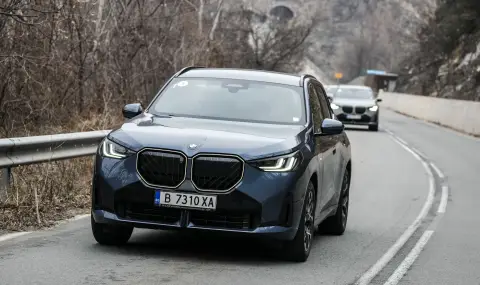In 2003, BMW introduced the xActivity Concept, based on the then 3 Series, an atypical car with an open roof and rear, which was designed for people with an active lifestyle, looking for a higher seating position and greater ground clearance than typical customers of the “troika“. Just a few months later, in September, during the Frankfurt Motor Show, the Bavarians showed the first generation of the X3, bearing the designation E83 and opening an entirely new class in the automotive industry, known as SAV (Sport Activity Vehicle).
Over 20 years later, the BMW X3 has gone through three generations and has become one of the most recognizable models of the brand, occupying leading positions in annual sales reports. Now it's the fourth generation, which has drastically changed its appearance, grown in size and is now even larger than the first generation of the X5.
Exterior
BMW's design language in recent years has been a topic of discussion with the presentation of almost every new model, and the G45-generation X3 is no exception. Although the silhouette of the model remains similar to that of the previous generation, we cannot say the same about the overall appearance of the car.
The front is dominated by the brand's kidney grille, which, depending on the level of equipment, can have a different shape, an inner part with diagonal slats in the standard and M Sport models or horizontal ones in the top M50 modification. Like other models of the brand, here too the grille is illuminated. Just below it are the main air ducts of the bumper, complemented by two smaller ones in the side part.
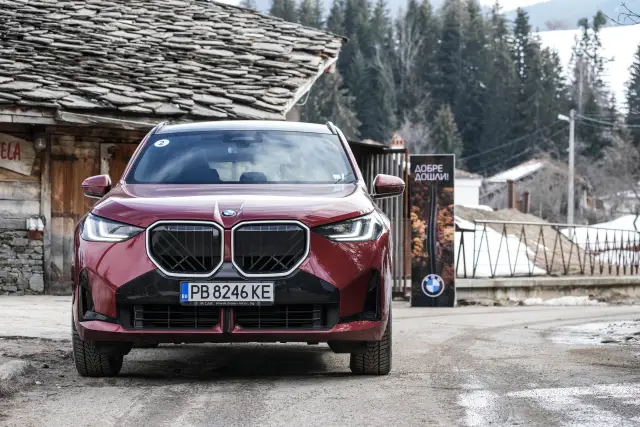
The lights are completely new with an L-shaped light signature, which we see more and more often on the new models of the Bavarians and practically replaces the “angel eyes” so popular over the years. This type of daytime running lights is available on all equipment levels, and optional matrix lights complement the configuration options of the front light package.
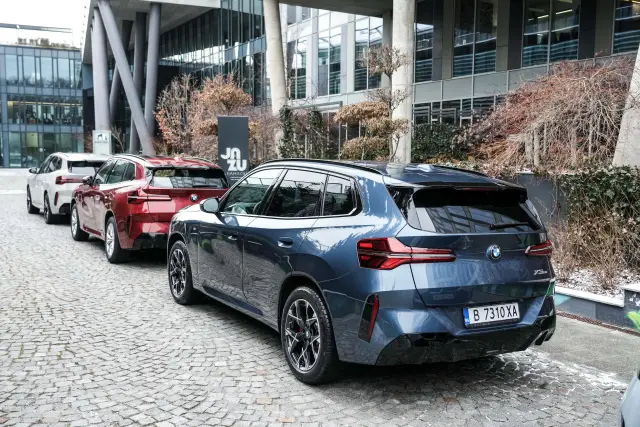
Continuing with the side line, this is definitely the place where we can see the most similarities with the previous generation and the model. However, there are changes here too. The side part is maximally cleared of unnecessary lines, and the handles are now flush with the surface of the doors. The size of the wheels varies from 18 to 21 inches depending on the equipment level and the wishes of the customer. As we mentioned earlier, the crossover has grown in size and now reaches 4755mm, or 34mm more than before. On the other hand, the height has dropped by 25mm to 1660mm, and the width has increased by 29mm to 1920mm. The wheelbase is identical to its 2865mm.
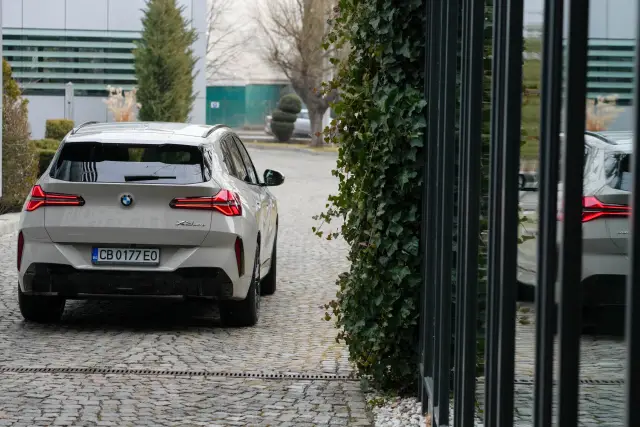
The rear is also completely new, again relying on a maximally clean design, achieved mostly by moving the number from the hood to the rear bumper. The lights follow the thematic L-shaped configuration with mirror images in each of the taillights, again relying on LED technology. Depending on the equipment level, a silver diffuser is available for standard equipment levels, a black one for M Sport, without exhaust tips or a more aggressive version with two twin pipes for the M50.
Interior
Leaving aside the large curved display, which we already know from other models of the brand, the accent in the interior of the new X3 is the so-called Interaction Bar, which surrounds the center console, the area under the infotainment system, as well as the door skins. The translucent lining of these panels allows them to be illuminated in different colors depending on your mood or driving mode, and also warns you of danger, such as an object in your blind spot when overtaking or the like.
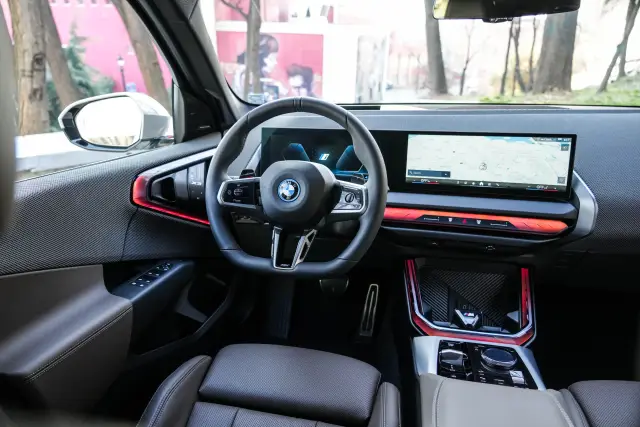
The dashboard is as clean as possible, and at both ends are integrated air ducts that integrate extremely well with the doors and the sensor controls for air flow and door locking located on them, creating a feeling of envelopment and continuous integrity of the interior space. Depending on the trim level, you can choose recycled fabric for the dashboard and seats, which while a good option for reducing waste, is not our first choice for the interior of a car in this class. However, there are also Veganza options and BMW Individual Merino, which offer the option of a leather surface or a combination with Alcantara.
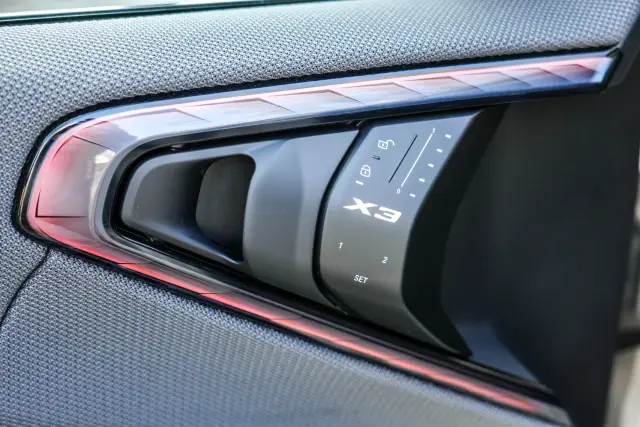
The space in the interior is sufficient, both for the driver and his passenger, and for the passengers in the rear, and the seats offer good comfort with electric adjustment options, including side supports, heating and ventilation. The only remark regarding the space is the large center console, which is connected to the compartment for placing a smartphone and cup holders, which slightly limits the knee space if you are over 1.90. Speaking of this space, there are physical controls for the driving modes, the round joystick for the infotainment system, as well as the gear shifter, which is familiar to us from other models of the brand. The steering wheel, also familiar from other models, can be a three-spoke with a beveled lower part or a two-spoke, again with a flat part at the bottom. The trunk is large and offers a volume of between 570 and 1,700 liters with the seats down.
Drivetrain and technical specifications
The new X3 offers a range of engine options to meet the diverse preferences of drivers, starting with the 2.0-liter four-cylinder gasoline engine in the X3 20i xDrive, which develops 208 hp. Moving on to the BMW X3 30e xDrive, which is a plug-in hybrid combining a 2.0-liter four-cylinder gasoline engine with an electric motor for a combined system output of up to 299 hp. It boasts an electric range of 81 to 90 km (WLTP).
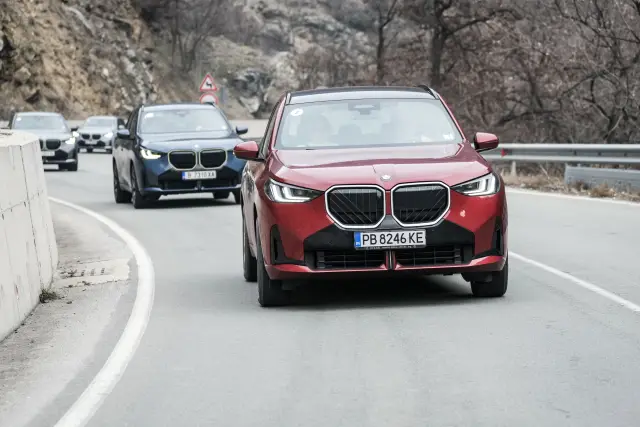
To the delight of many customers, BMW also retains the 2.0-liter four-cylinder engine in the X3 20d xDrive, which offers a maximum output of 197 hp and low fuel consumption. A more powerful inline six-cylinder diesel engine is expected to join the range in the summer of 2025. The BMW X3 M50 xDrive is the icing on the cake. Powered by the most powerful inline six-cylinder petrol engine ever seen in an M Performance car, this 3.0-litre engine, combined with 48-volt mild hybrid technology, delivers a maximum output of 398 hp. Thanks to the 8-speed transmission and all-wheel drive system, the X3 M50 shoots from 0 to 100 km/h in 4.6 seconds.
We had the opportunity to test the diesel and both petrol engines, starting with perhaps the most preferred in our country, namely the 2.0-litre diesel engine. As we have already mentioned, it has 197 horsepower and a maximum torque of 400 Newton meters. Combined with the eight-speed automatic, we can say that this is the combination that the majority of customers looking for a crossover of this type should go for. When driving calmly, the consumption is not far from the declared 6 liters per 100 kilometers, and thanks to the high torque values, the car does not feel sluggish when overtaking or accelerating.
The “clean” gasoline option with the same cubic capacity increases the power by 9 horsepower, but reduces the torque to 330 newton meters and, to be honest, we were slightly disappointed with the dynamics here. Although in theory the acceleration to 100 km/h is almost identical (0.1 second slower with gasoline), the diesel version feels more dynamic during normal driving. Despite this small difference, the two modifications share similar road behavior, offering good and predictable behavior in bends with minimal body lean, while maintaining comfort on bumps.
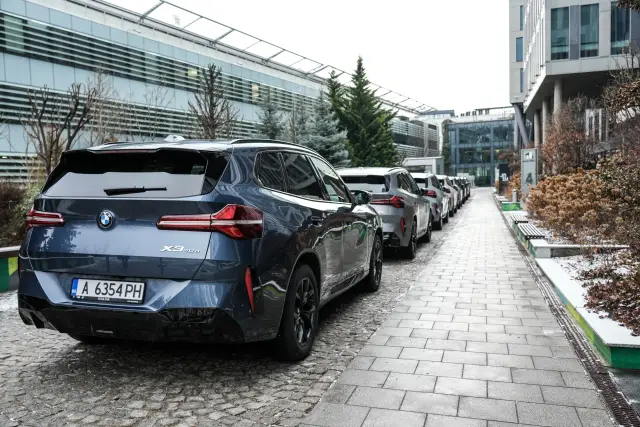
We move on to the most powerful version, namely the X3 M50, as we have already mentioned, it relies on BMW's 3.0-liter engine and at least for the moment, and probably in the future, this will be the most powerful version of the X3 that will be offered. Here, BMW engineers have improved the brakes, steering and suspension, and if in the standard modifications we can say that the behavior in corners is predictable, here we would say that the car is glued to the road, of course, taking into account the weight of nearly two tons and the class it is placed in. Acceleration from 0 to 100 km/h is 4.6 seconds and is complemented by the pleasant roar of the six, perhaps additionally supported by the audio system, and more dynamic driving is quickly "caught" by the transmission, which begins to list the gears with a pleasant shift to the higher values of the tachometer, which is located on the right side of the screen in front of you. There are also paddle shifters available to add to the sporty driving experience if you decide you want to take control of the gear changes.
In summary, the new X3 relies on a well-tested recipe with a refreshed look, which only time will tell how successful it can be. In Bulgaria, prices for the updated model start at 110,100 leva for the base model X3 20 xDrive with a gasoline engine, 113,500 leva for the diesel and 121,400 leva for the plug-in hybrid variant. The top-of-the-line X3 M50i xDrive starts at 156,500 leva.
